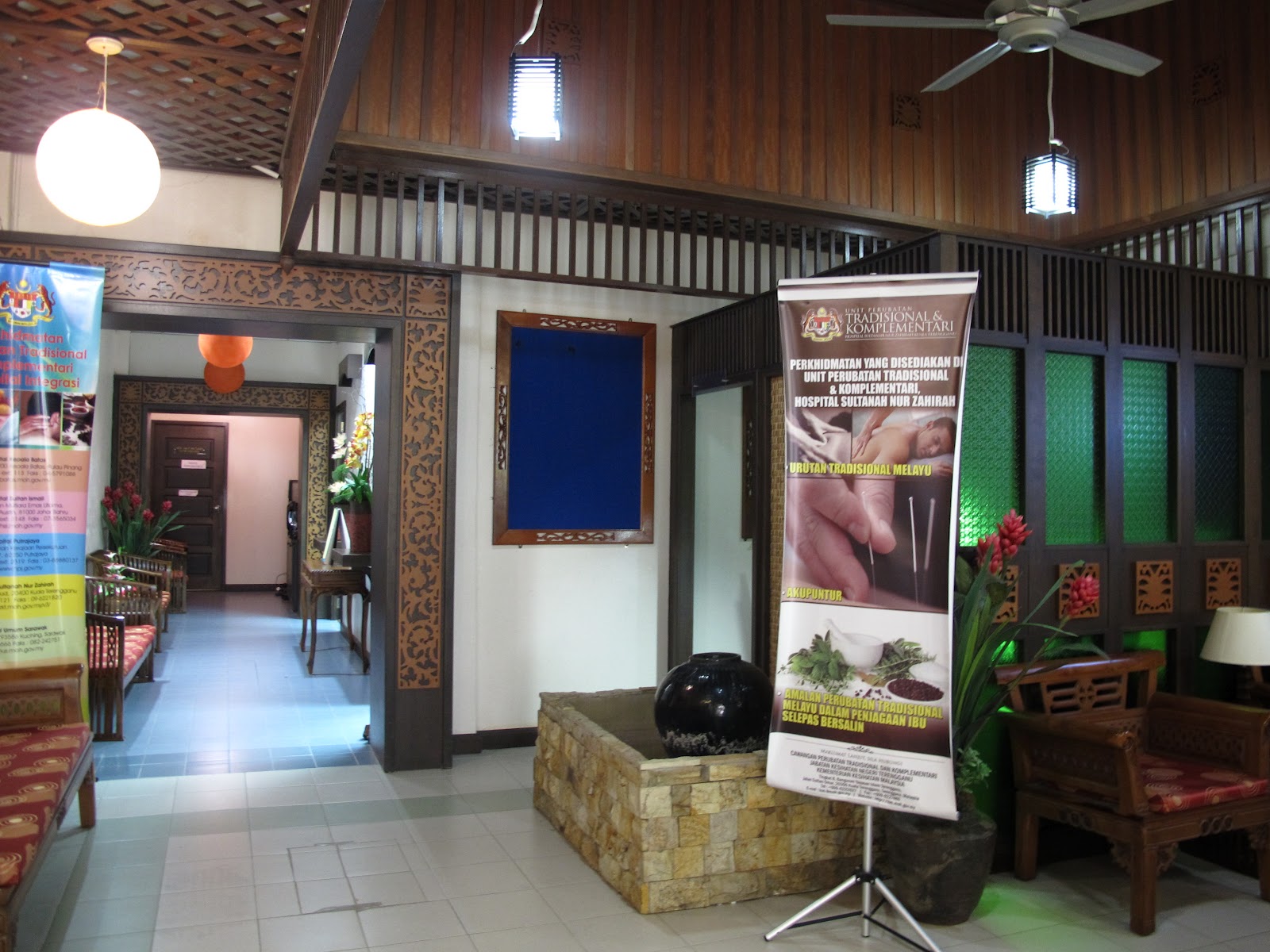Should Malay massage be integrated with modern medicine? The Health Ministry believes so.

- 379Shares
- Facebook352
- Twitter2
- LinkedIn1
- Email6
- WhatsApp17
What comes to mind when you hear the phrase ‘traditional medicine‘?
For some, the phrase might evoke images of shamans waving leafy branches over a patient in a room thick with incense. Others may imagine downing weird-smelling concoctions made of weeds and questionable animal parts, or drinking holy water infused with nothing but prayers or recitations from a holy book. Sometimes seemingly hippie words like ‘chakras’ or ‘qi’ or ‘genies‘ are thrown around.

You may have heard some of these different names for them: alternative medicine, integrative medicine, and complementary medicine. They basically mean the same thing, but we’ll get to that later. However, others have also referred to them as snake oil, a waste of money and a load of bollocks.

There’s a clear line between forreals medicine and these other forms of medicine, so it may be surprising for some to hear the recent news where our Ministry of Health launched a ten-year Blueprint on Traditional and Complementary Medicine (T&CM) as a guideline for their practitioners. Yep, in Malaysia, these other medicines are referred to as T&CM, and it includes “practice other than the practice of medicine or surgery by registered medical practitioners, as defined in our Medical Act 1971.”
Anyways, the blueprint involved the input of various people, including ministries, NGOs, academic institutions and professional bodies, and according to our Health Minister, Dr. S. Subramaniam, it represents:
- the ministry’s passion and continuous commitment to regulate and professionalize the practice and practitioners of T&CM in the country.
- the direction of which T&CM needs to strengthen its position in the national health care system on the basis of strong scientific evidence and to bring Malaysia closer to its National Health Care goals.
- encouragement for the expansion of T&CM services and the co-existence of T&CM and modern medicine across all levels of health care.
Eh? Since when did the ministry care about traditional medicine and whatnot? Well, you might be surprised to know that…
Some of our public hospitals have been offering T&CM services for a while now

Sometime in the 2000s, the Health Ministry proposed a program where selected T&CM practices were integrated into the national health care system, and in 2006 the cabinet approved that proposal. So, in the 8 years between 2007 to 2015, T&CM departments have been established at at least 16 government hospitals or clinics around the country. And if you think that these are all rural hospitals, among the institutions that offer T&CM services include Hospital Putrajaya and the National Cancer Institute. So what kind of T&CM practices were selected for this program?
It differs according to the hospital. The National Cancer Institute offers acupuncture and herbal drinks to help cancer patients recover from the effects of chemotherapy and manage their pain. Varmam therapy, which originated as a South Indian martial art where people punch each other’s pressure points, is offered at the Sungai Buloh Hospital. The Putrajaya Hospital offers acupuncture, traditional postnatal care, and Malay massage. They also offer cupping therapy, which involves placing suction cups on various parts of the body as a form of deep-tissue massage.

We couldn’t find any other alternative treatments offered at government hospitals yet, but according to Order P.U. (A) 223 of the Traditional and Complementary Medicine Act 2016, there are seven kinds that are recognized by the Ministry of Health under this Act:
- Traditional Malay medicine
- Traditional Chinese medicine
- Traditional Indian medicine
- Homeopathy
- Chiropractic
- Osteopathy
- Islamic medical practice
By now, we roughly know what the first three are (massages, postnatal care, acupuncture, herbal remedies and Varmam, for example), but the other four might need a little explaining. Homeopathy is a treatment system based on the body’s own healing powers and it works by aiding the body using the minimal amount of homeopathic medicine possible. Chiropractic, on the other hand, involves diagnosing and treating disorders of one’s muscles and bones, especially the spine, believing that it improves general health. Osteopathy is pretty much the same as chiropractic, only with different histories and focusing less on the spine. Islamic medicine is actually a recent addition to the list, and while we’re not quite sure what it entails (we can’t find the exact definition), it may involve Quranic recitations and herbal cures based on the Quran and the hadiths.
According to the National Policy on T&CM, while these treatments has its benefits, the ministry had acknowledged that they are largely not supported by any scientific evidence. Despite that…
A large portion of Malaysians believe in alternative treatments, so the MOH can’t ignore them

A study done on orthopedic oncology patients found that 61.3% of them had turned to complementary or alternative medicine at some point during their illness, and the most common alternative treatment they chose was dietary supplements and prayers. Datuk Mohd Ismail Merican, Malaysia’s former Director-general of Health once quoted a study that found half of their subjects used traditional oral medicines before seeing a doctor, and about 57% of them mixed traditional and Western medicine.
A nationwide survey done by MOH’s T&CM unit in 2004, on the other hand, found that almost 70% of Malaysians have turned to T&CM at least once in their lives, with 55% of them having done so in the past 12 months.
Based on these studies, it’s safe to say that a significant chunk of Malaysians truly believe in the effects of alternative treatments. The World Health Organization (WHO) estimated that sales of T&CM medicines reach RM1,000 million annually (compared to RM900 million in pharmaceuticals), and a study in the Journal of Applied Pharmaceutical Sciences had noted that despite T&CM treatments being usually more expensive than conventional treatment, people are still willing to pay for them. With the popularity of these treatments, the Health Ministry have to be aware of them and do something about it.
So, in 1996, the T&CM unit was formed under the Ministry of Health with the primary aim to regulate T&CM practices in Malaysia. This was done by making sure that practitioners have to undergo some sort of formal training before they can do their stuff. They also set certain standards to be followed by practitioners, as can be seen in this guideline for traditional Malay massage they published.
Among other things, for example, the practitioner had to keep a standard of cleanliness as well as maintain their professional distance from their clients. The T&CM unit also maintains a registry of certified practitioners, and they regulate and monitor learning centers that offer T&CM courses, which are all private institutions for now.

Practicing traditional medicine without registering with the T&CM unit is an offence under the Act, and will net a fine not exceeding RM30,000 for the first offence, or a jail term not exceeding two years. As of 2015, almost 14,000 T&CM practitioners have been registered, with an overwhelming majority of them registered as practitioners of traditional Chinese medicine.
While we can be sure that registered T&CM practitioners probably know what they’re doing, it should be noted that…
If you plan to get a T&CM treatment, you should still see a doctor first

While T&CM centers have been established in government hospitals and clinics nationwide, the ministry’s guidelines state that they should never replace conventional treatment. Dr Azlina Mohd Husain, head of the T&CM unit at Hospital Putrajaya, told the New Straits Times that complementary treatments are meant to ease symptoms of a disease, not cure them.
“The Health Ministry advised against the use of complementary treatment to treat diseases or illnesses. There are cases where patients have refused to seek treatment at the hospitals and opted for alternative treatment. Unfortunately, their condition worsened. Complementary treatment is only applicable for relief of symptoms.” – Dr Azlina Mohd Husain, for NST.
According to Dr R Madanmohan, a doctor in Petaling Jaya, this is the difference between complementary and alternative medicine. Complementary medicine adds to conventional treatment, while in alternative medicine’s case, it’s either one or the other, meaning that alternative medicine is often used instead of conventional treatment. So in T&CM’s case, it’s offered in hospitals as complements to treatments that patients are already going through.

For example, the herbal treatments offered at Hospital Putrajaya’s T&CM unit are not meant to cure cancer, but merely to help patients cope with the side effects of radiotherapy and chemotherapy. In some cases where patients experience prolonged pain that cannot be fixed by a surgery, massage and acupuncture are recommended, as prolonged use of painkillers may cause side effects like gastritis.
Dr Azlina advises people seeking complementary treatment to consult a doctor first, as they can figure out what is really wrong and tell the T&CM practitioner what to treat.
“If you are suffering from back pain, you may not know the cause. There are many reasons for back pain and the treatment may be different. With the doctor’s diagnosis, the practitioner is able to treat you better. And you should choose certified practitioners to ensure you receive proper treatment.” – Dr. Azlina, for NST.
- 379Shares
- Facebook352
- Twitter2
- LinkedIn1
- Email6
- WhatsApp17



